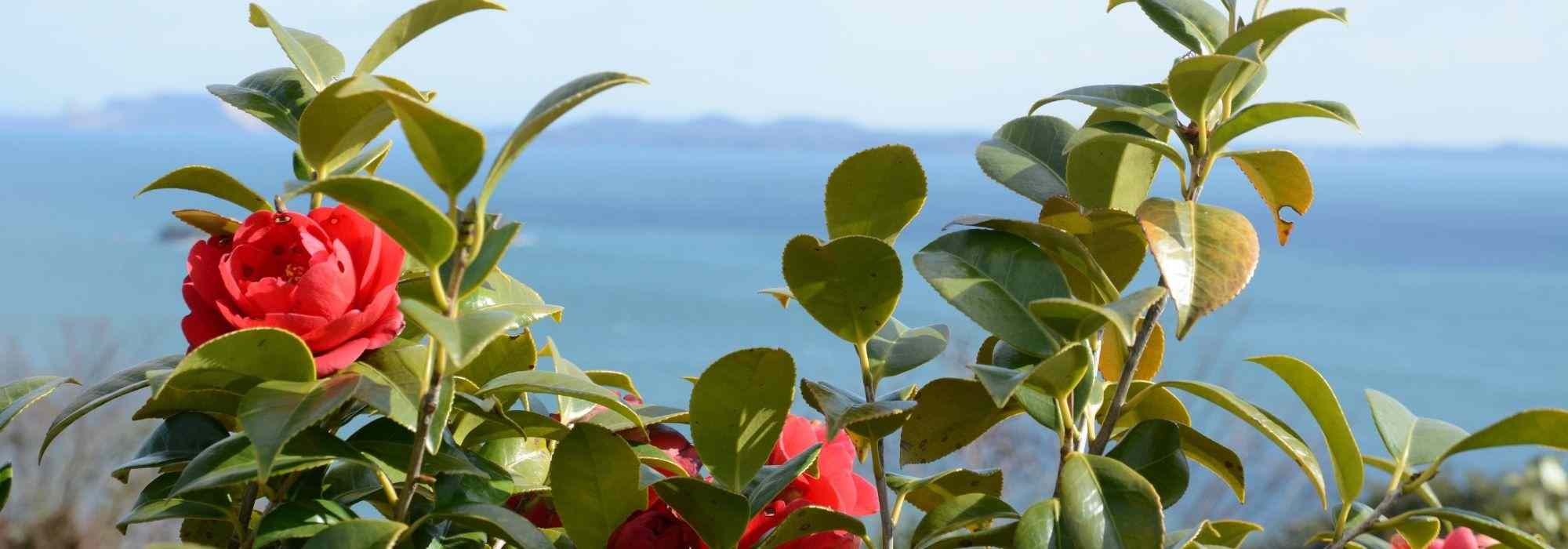
6 camellias for a coastal hedge
Our selection of camellias tolerant to sunny exposures and wind
Contents
Camellias are shrubs that have many advantages for the garden: glossy evergreen foliage, stunning flowering that can be rustic or much more sophisticated, as well as great ease of cultivation.
Their silhouette is easy to integrate in pots, borders, or even as hedges. While camellias generally prefer shaded or semi-shaded woodland environments, some varieties can thrive in full sun, especially in regions north of the Loire, allowing for the creation of beautiful flowering hedges by the seaside. Here is our selection of 6 camellias perfect for this use!
And to learn everything about cultivating camellias, feel free to read our article: Planting, pruning, and caring for camellias.
Camellia sasanqua ‘Variegata’: a bicoloured flowering and variegated foliage
The Autumn Camellia ‘Variegata’ is a small shrub, approximately 1 metre in all directions. It easily integrates into a seaside hedge, behind smaller plants or groundcovers, such as heathers.
This Camellia sasanqua blooms in early autumn, from late September to November, sometimes longer in mild climates. It reveals charming single anemone-shaped flowers, slightly fragrant. Their bicoloured petals are adorned with pure white edged and splashed with light pink, revealing a large heart of yellow stamens.
The foliage of this shrub is also decorative. In addition to being evergreen, it displays an unusual colour: initially pink in spring, the young shoots then turn grey-green, variegated and marginate with cream-white.
‘Variegata’ enjoys a sunny position, but not one that is drying. Hardy, it can withstand windy conditions. Hardy down to about -10°C, it will thrive in most seaside gardens with a mild and humid climate.

Camellia sasanqua ‘Variegata’
Read also
Camellias: planting, pruning and careCamellia sasanqua 'Kanjiro': large bright pink flowers
‘Kanjiro’ is an autumn camellia with stunning pink flowers. Its large double rosette flowers measure nearly 10 cm. They appear between November and February, stopping only when winter becomes too cold. The petals are delicately crumpled. They offer a deep pink hue shaded with red and reveal a small nest of golden stamens. A true touch of cheer, especially in winter, when the garden looks dull!
These colours are perfectly highlighted by glossy dark green foliage.
The upright silhouette of this camellia can reach 3 metres in height and 1.5 metres in spread. It has the advantage of a slightly faster growth rate than its counterparts. ‘Kanjiro’ can be grown in the background of a flowering hedge, alongside other heather soil shrubs, such as azaleas and rhododendrons.

Camellia sasanqua ‘Kanjiro’
Discover other Camellia
View all →Available in 0 sizes
Available in 1 sizes
Available in 1 sizes
Available in 1 sizes
Available in 1 sizes
Available in 1 sizes
Available in 1 sizes
Available in 1 sizes
Available in 1 sizes
Available in 1 sizes
Camellia ‘Cinnamon Scentsation’: a spicy fragrance
The Wild Camellia ‘Cinnamon Scentsation’ is notable for revealing, during its spring flowering period between February and May, an incredible sweet and spicy fragrance with hints of cinnamon. Its single flowers are white, delicately shaded with pale pink, illuminated by golden stamens.
The evergreen foliage is initially coppery at the bud burst period, before turning a light green colour.
This wild camellia has a bushy habit, but is slightly looser than other camellias, giving it a soft and natural appearance. It reaches a height of 1.5 metres with a spread of 1 metre. It offers quite good hardiness, down to about -12 to -15°C.
Our shrub can be grown in full sun as long as its roots remain cool. At its base, within a seaside hedge, cultivate small spring-flowering bulbs. For example, opt for daffodils, crocuses, or even tulips.
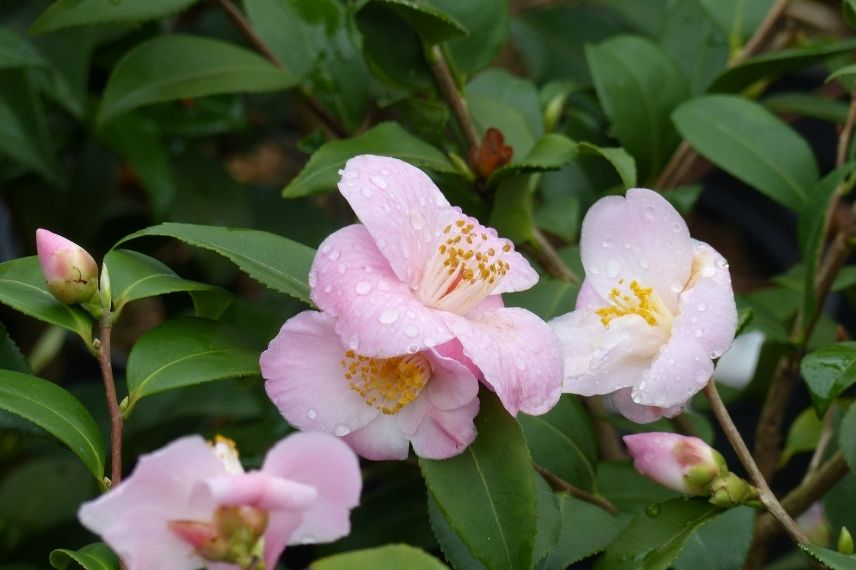
Camellia ‘Cinnamon Scentsation’
Camellia sasanqua ‘Choji Guruma’: a sophisticated flowering display
‘Choji Guruma’ is an autumn Camellia that offers early flowering, revealing its blooms from September to November. It produces delightful fragrant double flowers. They are composed of pink petals with lighter hues, opening to reveal a centre of frilled pom-poms. Discreet stamens form a small solar nest at the centre. A very elegant flowering!
Of modest size, it reaches about 1.5 metres in height and 80 cm in spread after a few years.
‘Choji Guruma’ will thrive in a flowering hedge in a sunny position, while still keeping the soil cool in summer. Camellia sasanqua has the advantage of tolerating even windy exposures. It can be accompanied by a Witch Hazel, which will take over the flowering in winter, as well as a Skimmia with its lovely decorative fruits.
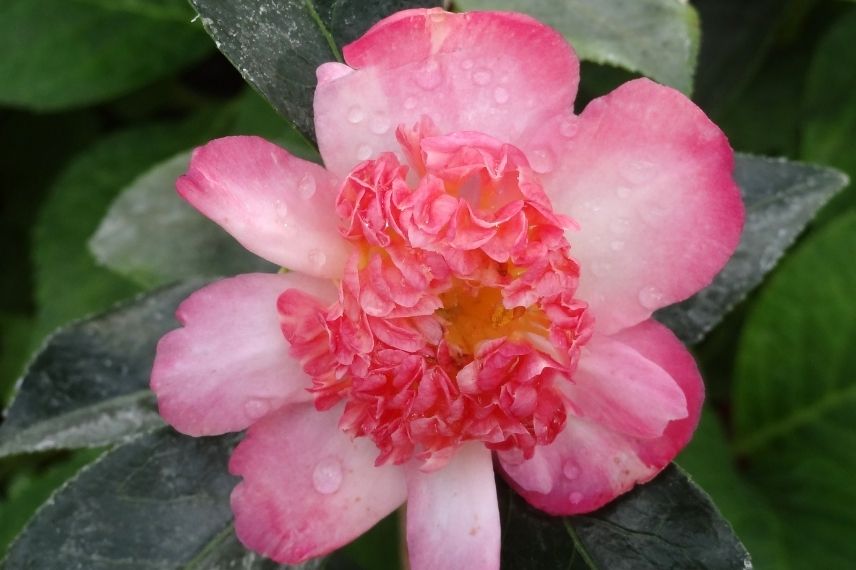
Camellia sasanqua ‘Choji Guruma’
The wild Camellia ‘Sweet Jane’: a variety with natural charm
‘Sweet Jane’ is a woodland Camellia flowering in late winter, between January and April, depending on the climate. It offers an abundance of small, light pink double flowers, with a deeper pink edge and reverse. They have the advantage of being resistant to rain, which is common in coastal gardens.
The foliage is equally charming, initially bronze copper before turning olive green.
Its slow growth and moderate development (1.2 metres in height and 90 cm in spread) allow it to fit easily into a hedge.
Woodland varieties have a looser and more flexible silhouette than other Camellias, making them perfect plants for a natural setting. Pair this variety with autumn Camellias to enjoy staggered flowering for many months.
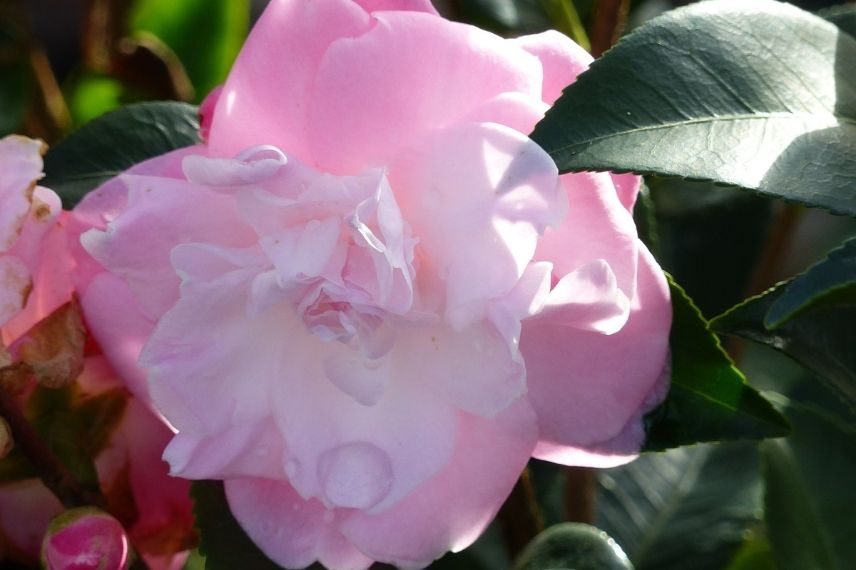
Camellia (x) transnokoensis ‘Sweet Jane’
Camellia sasanqua ‘Early Pearly’: a little gem for seaside hedges
The Camellia sasanqua ‘Early Pearly’ is an autumn-flowering variety, showing the tips of its petals quite early, between October and December. Its multiple double flowers are a magnificent pearly white, true little pearls that brighten the cold season. The glossy dark green foliage contrasts beautifully with this colour and serves as a backdrop to the graceful flowering.
‘Early Pearly’ has a compact, bushy habit, reaching about 1.2 metres in height and 1 metre in spread after a few years. In a sunny position, just ensure that its base remains cool for it to thrive.
For companion planting, to dress its base, grow autumn bulbs: for example, choose from colchicums, Naples cyclamen, or the elegant nerines.
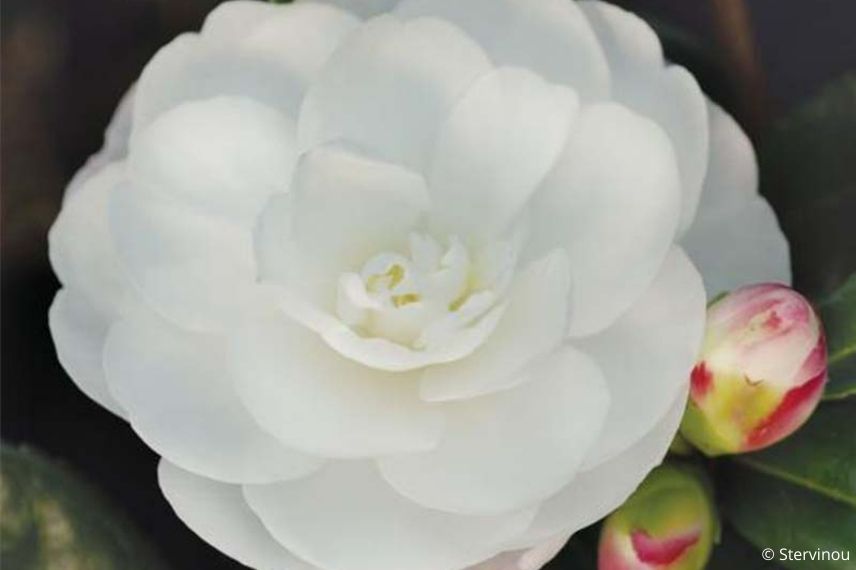
Camellia sasanqua ‘Early Pearly’
- Subscribe!
- Contents
































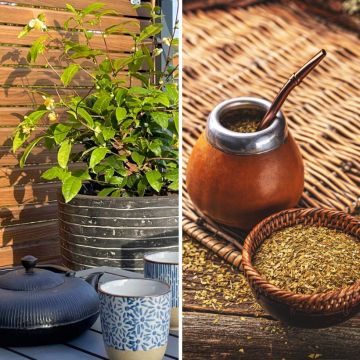
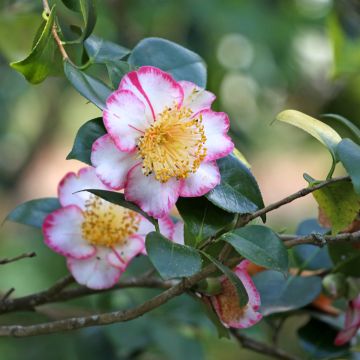
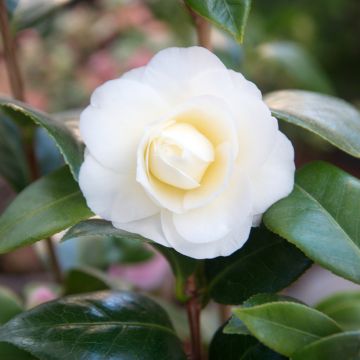


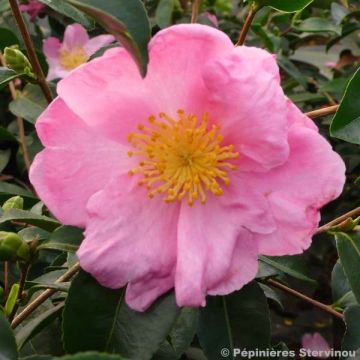
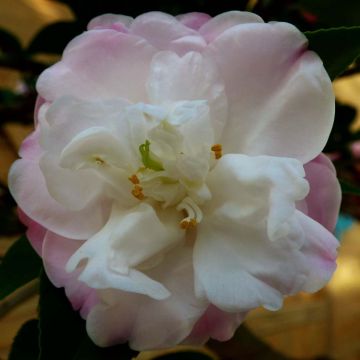
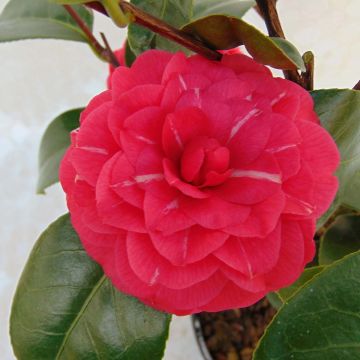


Comments